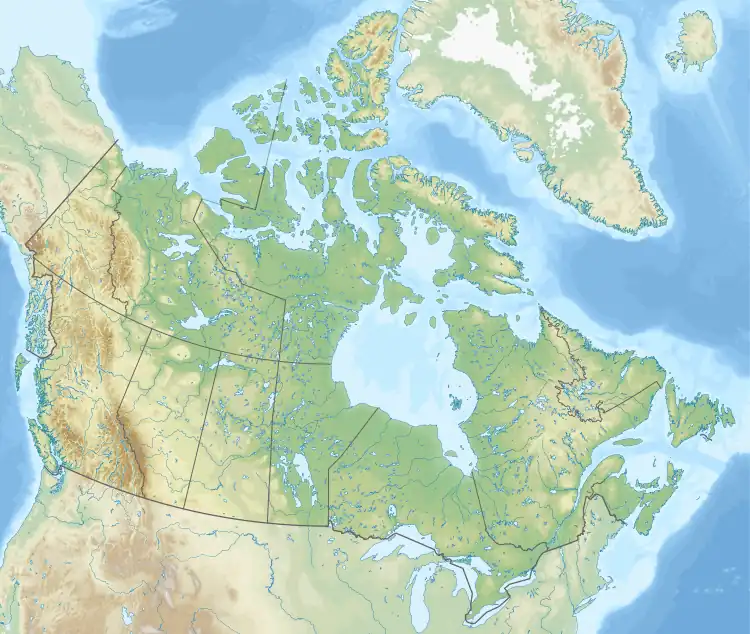Erskine | |
|---|---|
 Erskine Location of Erskine  Erskine Erskine (Canada) | |
| Coordinates: 52°19′16″N 112°52′47″W / 52.32111°N 112.87972°W | |
| Country | Canada |
| Province | Alberta |
| Region | Central Alberta |
| Census division | 7 |
| Municipal district | County of Stettler No. 6 |
| Government | |
| • Type | Unincorporated |
| • Governing body | County of Stettler No. 6 Council |
| Area (2021)[1] | |
| • Land | 0.86 km2 (0.33 sq mi) |
| Population (2021)[1] | |
| • Total | 319 |
| • Density | 371.3/km2 (962/sq mi) |
| Time zone | UTC−07:00 (MST) |
| • Summer (DST) | UTC−06:00 (MDT) |
| Area code(s) | 403, 587, 825 |
Erskine (/ˈɜːrskən/) is a hamlet in Alberta, Canada, within County of Stettler No. 6.[2] Previously an incorporated municipality, Erskine dissolved from village status on May 10, 1946, to become part of the Municipal District of Waverly No. 367.[3]
Erskine is located approximately 12 kilometres (7.5 mi) west of Stettler, 15 kilometres (9.3 mi) south of Rochon Sands and 64 kilometres (40 mi) east of Red Deer. It was established in 1905 and named after British jurist Thomas Erskine, 1st Baron Erskine (1750–1823).
History
Erskine was home to one of the worst mass slayings in Alberta when Social Credit Stettler representative John Clark murdered seven people before committing suicide on June 3, 1956.[4]
Demographics
In the 2021 Census of Population conducted by Statistics Canada, Erskine had a population of 319 living in 136 of its 140 total private dwellings, a change of 13.1% from its 2016 population of 282. With a land area of 0.86 km2 (0.33 sq mi), it had a population density of 370.9/km2 (960.7/sq mi) in 2021.[1]
As a designated place in the 2016 Census of Population conducted by Statistics Canada, Erskine had a population of 282 living in 122 of its 134 total private dwellings, a change of -2.8% from its 2011 population of 290. With a land area of 0.86 km2 (0.33 sq mi), it had a population density of 327.9/km2 (849.3/sq mi) in 2016.[5]
See also
References
- 1 2 3 "Population and dwelling counts: Canada and designated places". Statistics Canada. February 9, 2022. Retrieved February 10, 2022.
- ↑ "Specialized and Rural Municipalities and Their Communities" (PDF). Alberta Municipal Affairs. January 12, 2022. Retrieved January 21, 2022.
- ↑ "Table 6a: Population by census divisions and subdivisions showing reorganization of rural areas, 1931-1946". Census of the Prairie Provinces, 1946. Vol. I: Population. Ottawa: Dominion Bureau of Statistics. 1949. p. 422.
- ↑ Colin MacDonald (June 5, 1956). "Body Alberta MLA Found Lying In Slough". Vol XLIX No 148. The Lethbridge Herald. p. 1.
- ↑ "Population and dwelling counts, for Canada, provinces and territories, and designated places, 2016 and 2011 censuses – 100% data (Alberta)". Statistics Canada. February 8, 2017. Retrieved February 13, 2017.